Consumer 10GBase-T Options: Motherboards with 10G Built-In
by Ian Cutress on July 20, 2016 7:00 AM EST- Posted in
- Motherboards
- MSI
- ASRock
- Asus
- 10G Ethernet
- X99
- 10GBase-T
- Z170
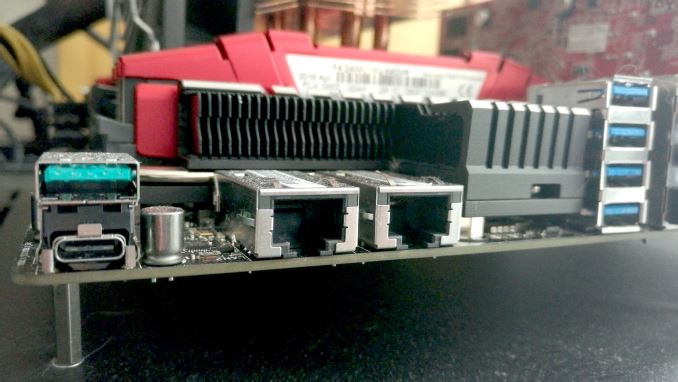
Any of our long time readers will know that I can have a soft spot for high-speed networking. Throughout the years I’ve been plagued with bad WiFi, irregular house shapes, routers that only come with a single 1G port, and the inability to set up a decent, cost effective high-speed home network. The movement to 10G has certainly been prevalent in the enterprise space, as shown by the growth of 10G panels at Supercomputing 2015 last year. However the movement to 10G for home use, which is still a niche category I admit, has been slow and still very expensive. Using 10GBase-T, over SFP or other connectivity, allows for backwards compatibility in the home which is still an important feature.
There are two main ways to show 10G to your home network: either pick up a NAS with 10G and use a switch with one or two 10G ports (then 10+ ports with 1G connections), or use a full 10G switch and have 10G devices. The cheapest 10GBase-T switch available for end-users is still Netgear’s XS708E 8-port switch, retailing for $750 or sometimes on sale for $625-650.
That’s around $80+ minimum per port for the switch, and then you need machines with 10G access. Depending on how the wind is blowing and what sales are on, single port PCIe cards with dual 10G ports can be had for $200-$220 on the gray market or up to $400 from source, with the main option of Intel controllers, however there are a few using an Aquantia/Tehuti networking solution. Or roughly translated, $100 per port, and it requires a system with a spare PCIe 2.0 x8 slot.
As we’ve previously reviewed at AnandTech, there are other options for having consumer-based 10G enabled systems. We reviewed the ASRock X99 WS-E/10G back in December 2014, which used a PLX PCIe switch to enable both the Intel X540T2 controller and four-way GPUs in a high-end motherboard. This motherboard currently retails for $770, and uses Haswell-E and Broadwell-E high-end desktop processors.
This motherboard held the title of the only consumer motherboard to come with a 10G chip for over a year. Late last year, in November 2015, ASUS met the feature half-way, offering their high-end Skylake-based Z170 Maximus VIII Extreme motherboard with a bundled single-port 10GBase-T card built on the Aquantia/Tehuti platform. The package carries the Extreme/Assembly branding, and also comes with a front panel DAC. We didn’t get time to review this bundle, and unfortunately the 10G card isn’t sold separately. The whole package is currently on sale for $570, however as it is Skylake based we are limited to a quad core i7-6700K system in this case.
Move forward to Computex 2016, and ASUS dropped on my doorstep the day before I left their new 10G motherboard design for Broadwell-E processors – a near final version of the product. This is the ASUS X99 E-WS/10G, their high-end desktop workstation motherboard with a built in Intel X550T2 controller for dual 10G ports. The board also comes with reinforced PCIe slots, support for U.2 drives, USB 3.1 and most of the updated modern features for a high-end product. We’re still in the process of testing and reviewing this motherboard, which is set for release sometime soon. Price unknown at this point, but we expect it to be certainly near the ASRock 10G board.
On the show floor at Computex, we saw another new entrant to the onboard 10G market on display. While all the other motherboards have been ATX (or E-ATX) so far, MSI is going to plug an Intel X550 controller on a Xeon grade Z170 micro-ATX motherboard to go after some smaller form factor designs. This design uses the C236 chipset, allowing users to equip either a Skylake Core CPU or a Xeon E3-1200 v5 processor, and siphons off four PCIe lanes from the CPU for the 10G controller. This gives 12 lanes from the CPU left, 8 of which go to the main PCIe slot, and another four to the M.2 slot as well. Being both Z170 based and micro-ATX should allow this product to be priced cheaper than the others, although unlike the others it only houses one 10GBase-T port rather than two. When MSI are near final with this motherboard, we’d love to get it in for testing.
There are also a variety of non-consumer focused motherboards with 10GBase-T ports, either with Xeon-D SoCs or dual socket motherboards, such as the MBD-X9DRE-TF+ from Supermicro (dual LGA2011) for $670 or the X10FRC-T4+-O (dual LGA2011-3) for $941.
For consumers looking to move to 10G for home networking, we’re still waiting for the pricing of switches to come down, however it would seem that there are moves afoot to equip more motherboards with 10G by default. There’s still the added cost, and it means the PCIe lane layouts might be a bit different to normal, but it removes the need for an extra PCIe slot/card overall. It’s a slow march, and the price of both switches and 10G controllers needs to come down to make it a more viable option.



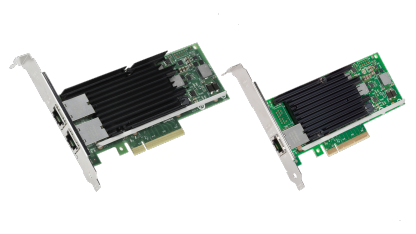
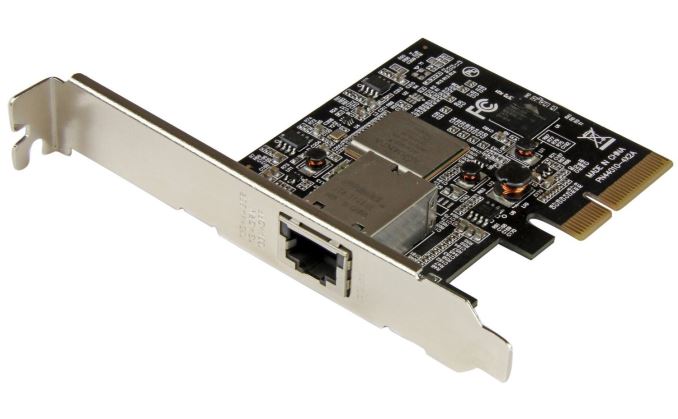
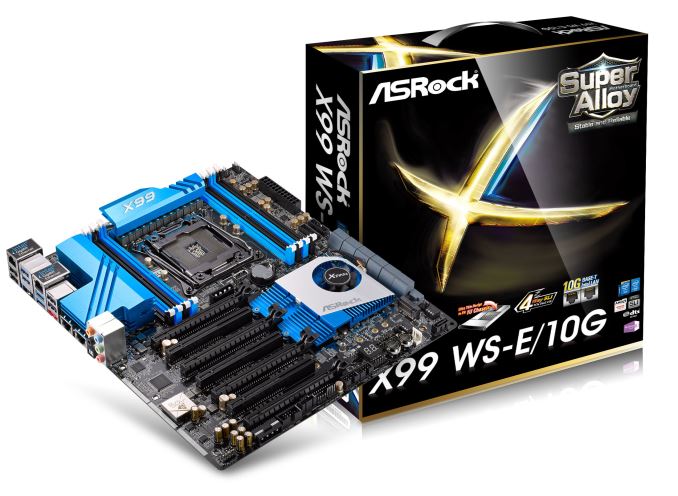
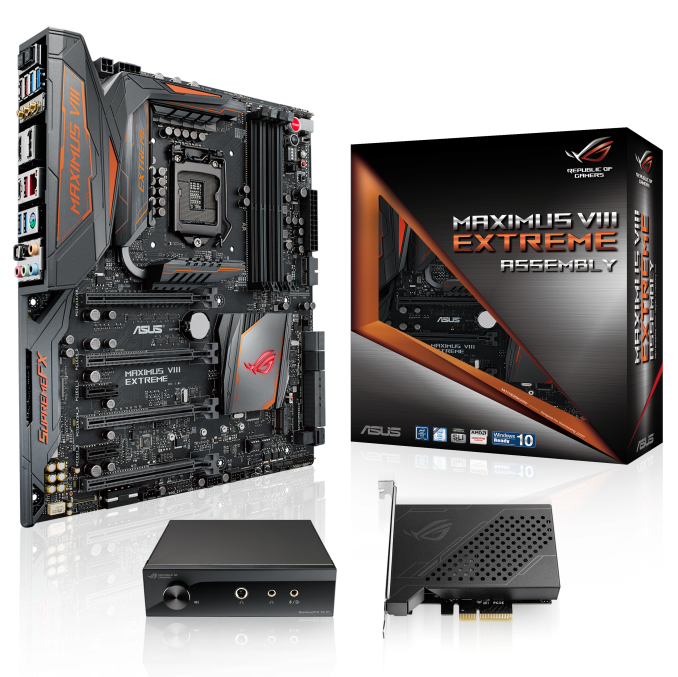
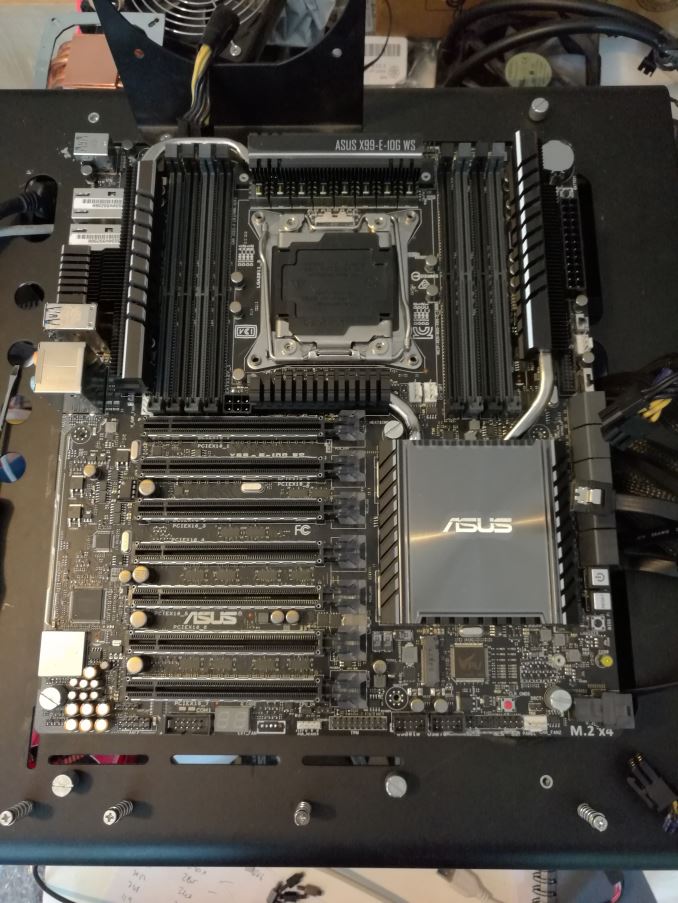















60 Comments
View All Comments
iwod - Thursday, July 21, 2016 - link
Yes I agree there are limited use case beyond 1Gbps. But once Wi-Fi moves beyond 1Gbps actual speed aka 802.11ax, and NAS. I see these use case to grow beyond 10 - 20% general, and significantly higher in Office environment.1Gbps is acceptable for now, but I really want 802.11ax to come with NBase-T 5Gbps Port. And since Router is always an easier upgrade, it would be nice if computer / PC today have early launch of NBase-T Port.
tygrus - Thursday, July 21, 2016 - link
The 2.5Gbps speed is required now for AP/modems but by the time that is common many of us have moved passed the 2.5Gbps (so the upgrade is then 5Gbps in 2 to 3yrs time).Once the new standards are approved the AP/modems should be moving to support the 5Gbps standard and also be compatible with 2.5Gbps to work with poorer quality cable/connection (larger distances, bends, lower spec cable, poor connections etc). Why waste time and effort to create twice the number of new products and re-testing ? Go straight to 5Gbps for switches/router/AP/modems.
PC's could have the option to support the 5 or 2.5Gbps specs if there is a major cost difference but I'd prefer them to support the higher spec if possible (the usual backwards compatibility). Wireless bandwidth is going over 2Gbps, internet with 1Gbps and soon to be higher, SSD's are >5Gbps (500MBps). The 2.5Gbps could have stood alone if it came >2yrs ago but we are now so close to using 5Gbps that 2.5 only gear is less valued.
jab701 - Tuesday, July 26, 2016 - link
It is true that the IEEE is still writing the standards for Ethernet 2.5 Gigabit and 5 Gigabit Ethernet over Cat-5/Cat-6 twisted pair – 2.5GBASE-T and 5GBASE-T.For datacenter/WAN style connections there are upcoming essentially complete standards and there are a number of companies with working implementations already, e.g.
802.3by due 2016, optical fiber, twinax and backplane 25 Gigabit Ethernet and going forward there is 802.3bs due ~2017 which is 400 Gbit/s Ethernet over optical fiber using multiple 25G/50G lanes.
jensend - Wednesday, July 20, 2016 - link
Agreed. Even just the power and cooling requirements for present-gen 10G equipment could be difficult for consumer setups to deal with. The next couple of generations of 10G chips are probably still going to be way out of normal consumer networking budgets. Of course, one elephant in the room is the expense of putting in Cat 6A everywhere. And the need for 10G simply isn't there.There are plenty of instances where 1G can be a bottleneck for consumers (802.11ac access points, NAS). But it's hard to think of realistic consumer use cases for more than 2.5G and very hard to think of >5G use cases.
2.5G should be vastly easier to implement than 10G. It could come down close to the price of 1G gear relatively quickly once economies of scale kick in. And of course there's no new cabling requirements.
thewhat - Wednesday, July 20, 2016 - link
>But it's hard to think of realistic consumer use cases for more than 2.5G and very hard to think of >5G use cases.With SSD prices dropping, I can easily imagine a NAS or home server with SSDs, which would be bottlenecked by 2.5 or 5Gbit. (The fastest SSDs right now are bottlenecked even by 10Gbit speeds.)
Of course, if we assume that NASs/home servers are irrelevant for 99% of people (which might very well be the case) then it's all pretty niche anyway.
Lolimaster - Wednesday, July 20, 2016 - link
2.5-5Gb would have more sense consumer side (excellent for sata SSD reads/copy)bill.rookard - Wednesday, July 20, 2016 - link
The problem with the pricing and adoption of 10G is that for the majority of home users which make up the bulk of the users, 1Gbit (125MB/sec ideal) is plenty. Video streaming requires a few MB/sec - even at 10MB sec - your average basic server can send out 5-8 simultaneous streams making 10Gbit unnecessary.Yes, there are edge cases where particular people might need or want 10Gbit, but the pricing and availability reflects that.
roundtree - Wednesday, July 20, 2016 - link
"Using 10GBase-T, over SFP or other connectivity, allows for backwards compatibility in the home which is still an important feature."No one will ever use 10GBase-T over SFP, as 10GBase-T is the copper, twisted-pair specification. I would suggest correcting this statement from "10GBase-T" to "10 Gigabit Ethernet" or "10GbE" to avoid confusion.
Ian Cutress - Wednesday, July 20, 2016 - link
You've misinterpreted the comment. Over in the sense of 'choosing one over the other', or 'going with one rather than the other.Taracta - Wednesday, July 20, 2016 - link
Finally, 10GBase-T on relatively affordable motherboards! Now to just get the switches to an affordable price.